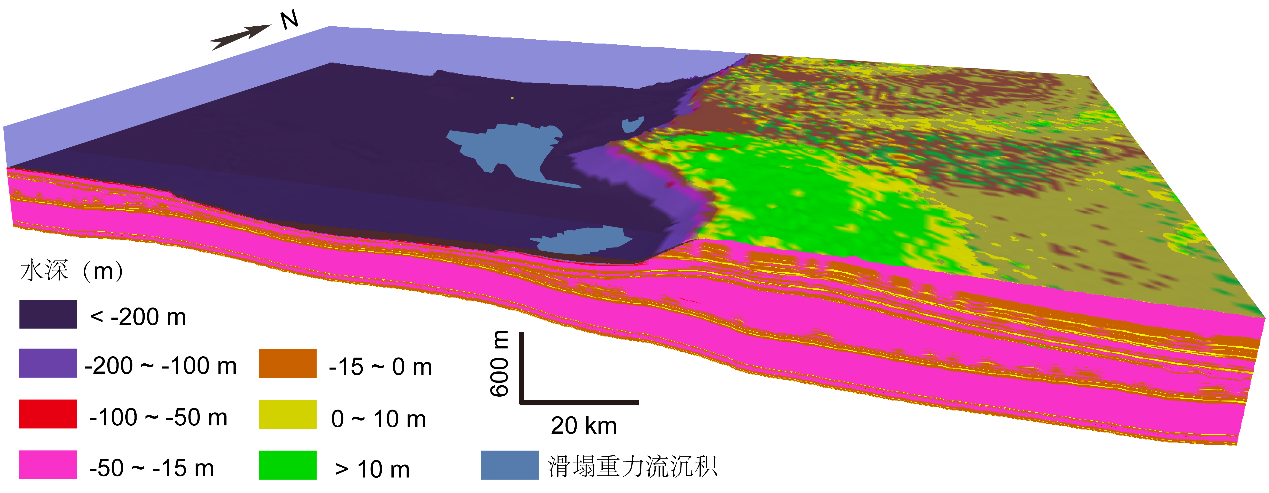Recently, Prof. Liu Keyu and his team from School of Geosciences in China University of Petroleum (East China), reported a research advance on stratigraphic forward modeling of carbonate deposition. The research was published in Earth-Science Reviews, a reputed journal in geoscience, entitled “Factors controlling carbonate slope failures: Insight from stratigraphic forward modelling”. The lead author is Associate Prof. Liu Jian liang with Prof. Liu Keyu being the corresponding author. This research was financially supported by the National Natural Science Foundation of China, the Strategic Priority Research Program of the Chinese Academy of Sciences, and the Chinese National Key R & D Project.

The slope of carbonate platform links the shallow-water carbonate platform and the deep-water basin facies, holding crucial stratigraphic records on the evolution of carbonate deposition. Gravity flow deposits, resulting from slope failures, are essential depositional entity for studying carbonate “Source-to-Sink” system, and are also considered as important targets for deep water or deep burial oil and gas exploration as its intervening development with excellent source rocks in slope to basinal settings. Previous research on carbonate slope deposition is mainly based on qualitative approach, lacking of quantitative evaluation on the occurrence conditions for slope failures and effective simulation methods for modeling carbonate slope evolution including the generation, transportation, and re-deposition processes of carbonate gravity flow. This has limited our appreciation of the controlling factors for carbonate slope failures.
To resolve these issues above and promote hydrocarbon exploration in deep water and deep burial strata, the paper first reviewed the development model of carbonate slopes and the occurrence conditions for slope failures world-wide, and then simulated the depositional processes and predicted distribution of gravity flow deposits in a deeply buried Late Ediacaran strata in the central Sichuan BasininsouthernChinausing theSedsim, and finally quantitatively determined the controlling factors, including carbonate lithology, carbonate growth rate, and frequency and amplitude of sea-level fluctuations, on carbonate slope failures. A three-segment carbonate slope depositional model was conceptualized and simulated in this study. This research illustrates how these key factors quantitatively affect carbonate slope failures in both spatial and temporal domains for the first time, and provides an effective tool for reconstructing depositional processes of both current and ancient carbonate systems, and deepens our understanding on carbonate gravity flow genesis.
Link: https://doi.org/10.1016/j.earscirev.2022.104108
Translated by Liu Jianliang
Reviewed: Xu Xiaoyan
Updated: 2022-07-29